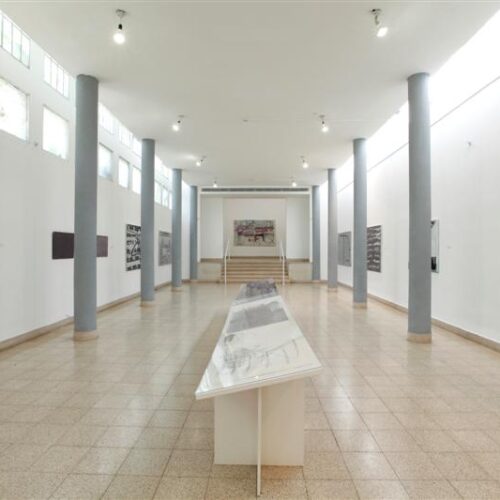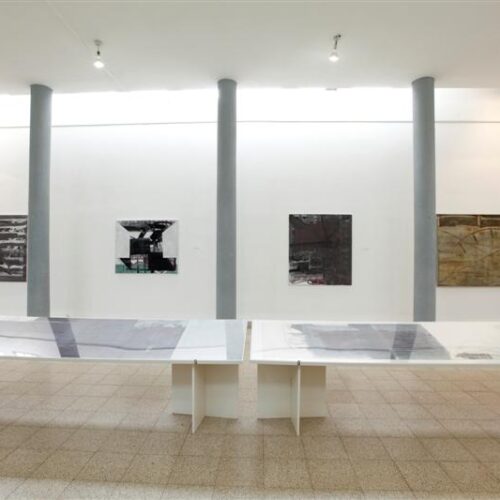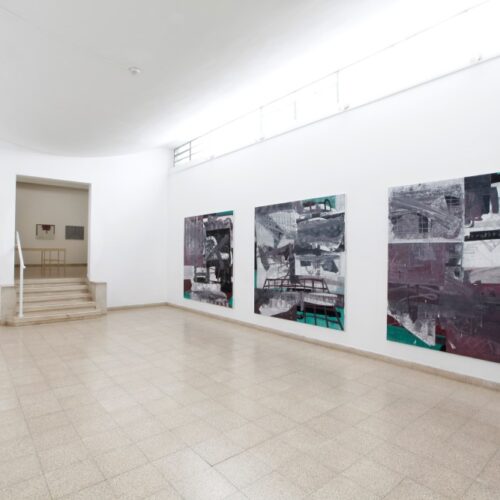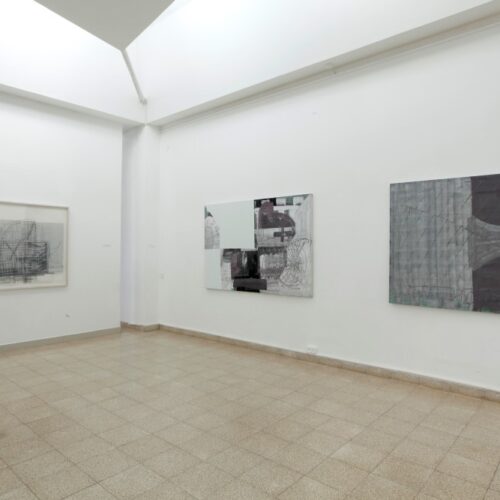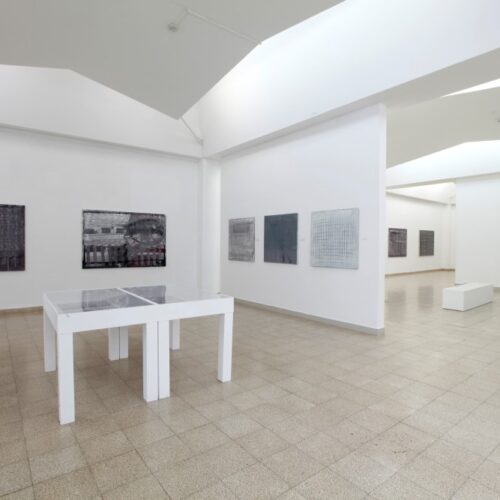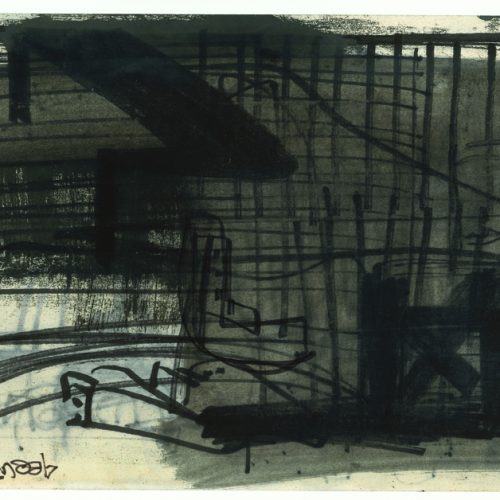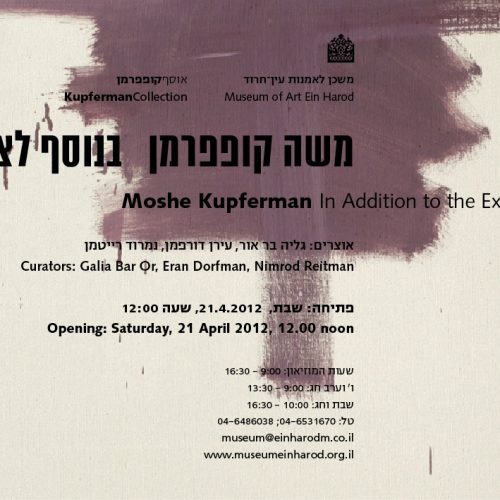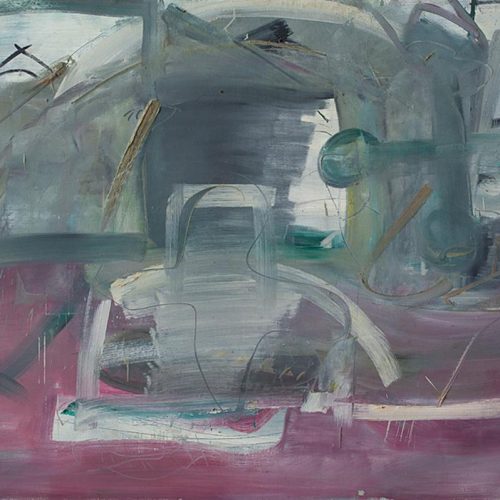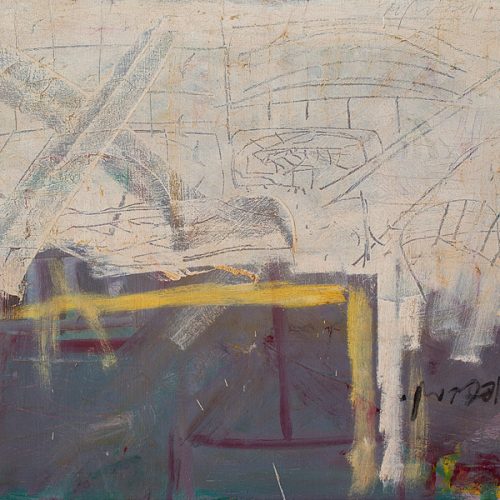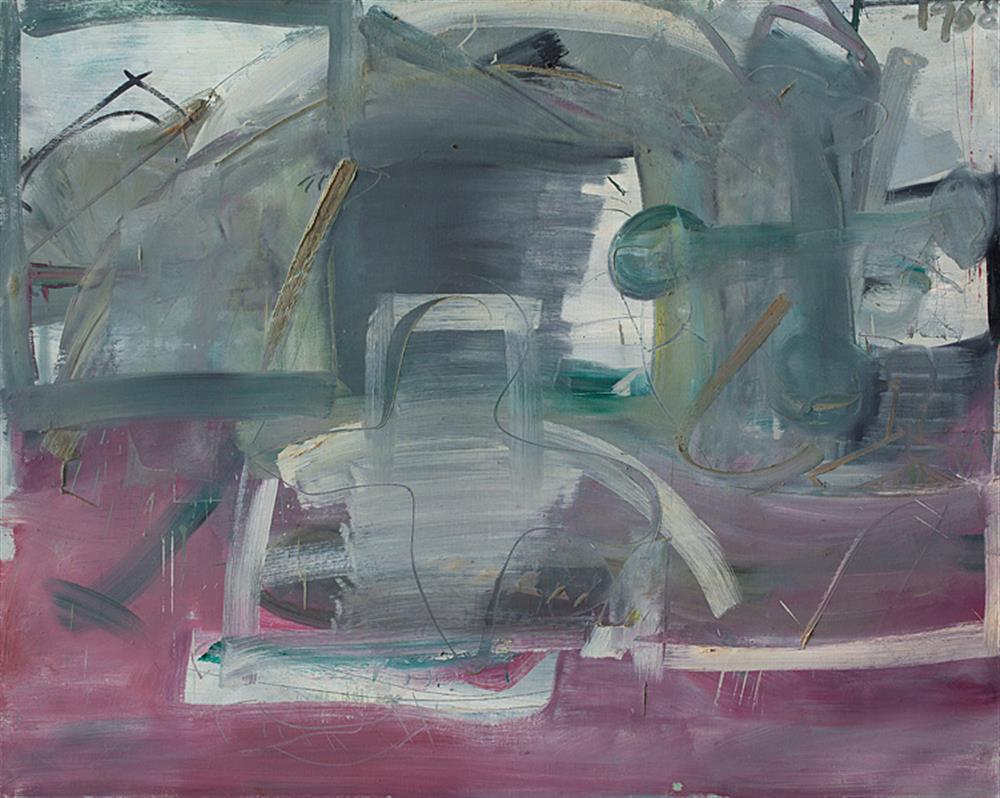
“In addition to the expected, something more happens in painting. It’s quite beyond our capacity to sort and to grasp separately what we’ve received from our intentions, our calculations, and what has sprung up out of nothing, unconsciously and inexplicably. There’s a secret.” – Moshe Kupferman , “Several Remarks”, 1998
In Kupferman’s work more is concealed than revealed, and every Kupferman exhibition invites a new reading of his oeuvre. This exhibition aims to create a multi-leveled viewing experience and to challenge common distinctions between the chronological and the thematic and between form and content. It opens with Kupferman’s early works from the ’50s and ’60s, and for the first time displays works that have been held in his atelier at Kibbutz Lohamei Ha-Getaot for several decades. These works reveal an unknown aspect of his oeuvre, such as the signs of human figures and of Hebrew letters, which make possible a deeper understanding of the process through which he crystallized his artistic language. Then the exhibition splits into four “gates” through which one can walk in a number of directions that offer various options of viewing and interpretation.
The first gate, Kupferman’s Everyday, focuses on the time-space relations in Kupferman’s work. It shows how the element of the grid – the parallel lines and the criss-cross lines – are a recurrent everyday framework that is present throughout Kupferman’s oeuvre, one that enables him to absorb events from life into it. The second gate, Free Variations, exposes the performative-musical dimension of the painting: elements appear, disappear, and reappear, and in the process bring about the creation of a rhythmic and melodious practice that is the artist’s unique language. The third gate, E(sthet)ics, aims to examine the ethical dimension of the painting, and how we, the viewers, are called to respond to the painter’s imperatives, especially in his absence, and to become partners to his creations. The fourth gate, Consolation, presents artistic creation as an activity that offers a possibility of repair through constantly relating to loss and melancholy.
The circulation route through the exhibition, via Kupferman’s history and each time through a different gate, adds new levels to visitors’ acquaintance with the artist. This experience of beholding is appropriate to his work, and complements it – for each of his paintings is composed of layers overlaying one another and all of the paintings compose a complete but open whole that invites costant change.
This is the first Kupferman exhibition to be shown at Ein Harod. He arrived at the kibbutz in 1949 to learn construction work and participated in the construction of the very building in which his comprehensive exhibition is now opening. He formed a longstanding friendship with the museum’s architect, Samuel (Milek) Bickels, and the museum’s architecture, which is based on natural lighting, influenced the planning of his atelier at Kibbutz Lohamei Ha-Getaot. It was in Ein Harod that he set out on his path as a painter, when he painted with Haim Atar, the museum’s founder. He became related to the family of “the Boss”, the co-ordinator of construction David Simchoni, marrying Mia Simchoni, with whom he established his home at Kibbutz Lohamei Ha-Getaot. This exhibition and the catalogue that accompanies it thus close a circle and offer a broad, fresh view of his work as a painter.


